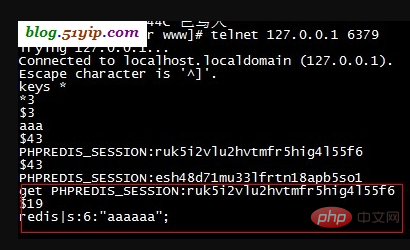
php method to realize that only one person can log in to an account: 1. Store the session information in redis; 2. Store the session_id in the mysql database; 3. When logging in, after verifying the user name and password, Read the user information from the database, obtain the user's session_id, and verify whether the session has expired; 4. If it has not expired, use openfire to push the message; 5. Update the new session_id to the database.

The operating environment of this article: windows7 system, PHP8 version, DELL G3 computer
php realizes that only one person can use the same account at the same time Login
I have considered this problem before and implemented it today. It is very fast. It takes almost 4 hours from research to development. It's a bit like QQ. If you log in with two computers, one will crowd out the other and prompt you for login information from other locations.
1. Implementation principle
1. The user logs in on computer A, the session information is stored in redis, and the session_id is stored in the mysql database.
2. The same user logs in on computer B. After verifying the user name and password, read the user information from the database, obtain the session_id of the user logged in on computer A, and then verify whether the session has expired in redis.
3. If it expires, openfire does not need to push the prompt information. If it has not expired, after PHP uses openfire to push the message, delete the session in redis where the user logged in on computer A. After deleting, put the personal information of the user logged in on computer B into the session, and put the user's personal information logged on computer B into the session, and then delete the session where the user logged in on computer B. The session_id is updated to the database. Here, the push must be sent first and then the session is cleared. Otherwise, the user on computer A will not receive the message sent by xmpp.
Note:
Openfire is a kind of java cms. It has its own database. The user table you create needs to establish some kind of relationship between the user tables that come with openfire (such as: mobile phone number , email, etc.) to facilitate information push.
The same session_id must be logged in on the same medium. At this time, there is no need to update the database and push messages.
The following is a brief introduction to the installation process and what to pay attention to.
2. Install the tools used
# yum install php php-fpm nginx mysql mysql-server redis php-redis php-devel php-pdo php-mysql
Modify the session storage method:
View copy and print?
# vim /etc/php-fpm.d/www.conf ;php_value[session.save_handler] = files //注释掉旧的 ;php_value[session.save_path] = /var/lib/php/session php_value[session.save_handler] = redis //添加以下内容 php_value[session.save_path] = "tcp://127.0.0.1:6379"
After starting the service, if the following content explains , the session was successfully saved in redis

View copy and print?
# rpm -ivh ./*.rpm //下载的是rpm安装包
PHP Video Tutorial"]
The above is the detailed content of How to implement in php that only one person can log in to an account. For more information, please follow other related articles on the PHP Chinese website!




